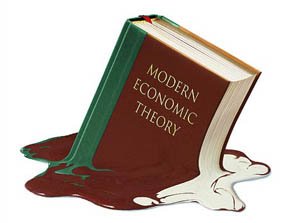Over 30 years of anarchist writing from Ireland listed under hundreds of topics
Official: High Priests of Austerity Can't Add Up - the wrong maths that made us suffer
Date: Wed, 2013-04-17 20:44
 Unless you're a economics geek you've probably never heard of Carmen Reinhart and Kenneth Rogoff. But that doesn't mean their work isn't affecting your life. A paper by these two prestigious Harvard economists has been a key justification for post-2008 austerity policies, with its oft-repeated claim that a national debt level of over 90% of GDP is fatal to growth. Yesterday we found out that paper was based on a spreadsheet that doesn't add up. Epic maths fail.
Unless you're a economics geek you've probably never heard of Carmen Reinhart and Kenneth Rogoff. But that doesn't mean their work isn't affecting your life. A paper by these two prestigious Harvard economists has been a key justification for post-2008 austerity policies, with its oft-repeated claim that a national debt level of over 90% of GDP is fatal to growth. Yesterday we found out that paper was based on a spreadsheet that doesn't add up. Epic maths fail.
For those of us who've wrestled with Excel or other spreadsheets, we may have some sympathy with problems in getting the damn things to work. But then we're not highly paid, tenured professional economists whose work is used to justify inflicting slash and burn austerity policies across the globe. A professional economist not being able to do basic maths on a spreadsheet, or check the outcome, is a bit like a building labourer forgetting how to use a shovel, or a drinker forgetting how to get the booze from the glass into their gob. It's beyond incompetence, it's the academic economist equivalent of wetting yourself in public.
Reinhart and Rogoff, both long-served economists became famous around the time of the crash with the release of their ironically-titled book "This Time Is Different" a sweeping survey of historical economic crashes. The reception of the book propelled them from being merely highly-respected academics in their field up to being the kind of big cheeses whose names are recognised by non-economists and carry a good deal of weight amongst policy makers from the IMF, ECB and national governments downwards. Consequently their paper of 2010 "Growth in a Time of Debt" which appeared to show that countries that ran national debts of more than 90% of GDP were doomed to negative growth - i.e. a death spiral. Journalists and politicians have been repeating the line about countries approaching the "90% of GDP limit, beyond which economists recognise that recovery is impossible" ever since, usually to justify savage austerity cuts, no less here in Ireland.
But for nearly three years other economists have tried to reproduce the results of the paper with no success. A good deal of complaints were raised about Reinhart and Rogoff's failure to release their data and workings. Finally, a few months ago, three economists from University of Massachusets, Amhurst were able to persuade the pair to send them the Excel spreadsheet the paper was based on. The resulting paper released by Thomas Herndon, Michael Ash, and Robert Pollin, "Does High Public Debt Consistently Stifle Economic Growth? A Critique of Reinhart and Rogoff", points out serious problems with the original work. The full technical details are in the article by Mike Konczal linked below, but basically there were three main problem areas. The first was discounting certain immediate post-WW2 years when highly-indebted countries had decent growth. The second was a weird weighting system whereby 19 years of economic performance by one country produced a single growth average which was given equal weight with a single year for another country who dipped briefly into the "red zone" after a local crash. Finally, most damning of all, the final sum of sums, simply missed rows off the bottom, Konczal: " [Reinhart-Rogoff] averaged cells in lines 30 to 44 instead of lines 30 to 49". The net result of all these issues created the famous -0.1% "tipping point" average growth which "proved" that countries with national debts of over 90% of GDP were doomed to a downward spiral into perdition with wailing and gnashing of teeth. When the Massachusets team did the sums properly, the result disappeared.
A couple of things arise from this absurd debacle. First of all, this has been presented as the pinnacle of financial and economic authority for the last three years and it's basically a cretinous pile of poo. The social and media authority attributed to the economist profession should be adjusted accordingly. Secondly, it's a measure of how careless R&R were that they never checked their spreadsheet after achieving "the right result" with all their fudging the weightings and omitting inconvenient data, that they passed on a faulty spreadsheet to colleagues that now exposes them to world-wide ridicule. Finally, its a measure of how desparate the powers that be are to find justifications for their knee-jerk class bias to attack the working class that this quality of rubbish has been elevated to the status of "tablets from on high". To treat this fiasco with the seriousness it and its authors deserves, all we can say is "Bog off, Rogoff and bollocks to austerity!"
See also: Mike Konczal: Researchers Finally Replicated Reinhart-Rogoff, and There Are Serious Problems.


